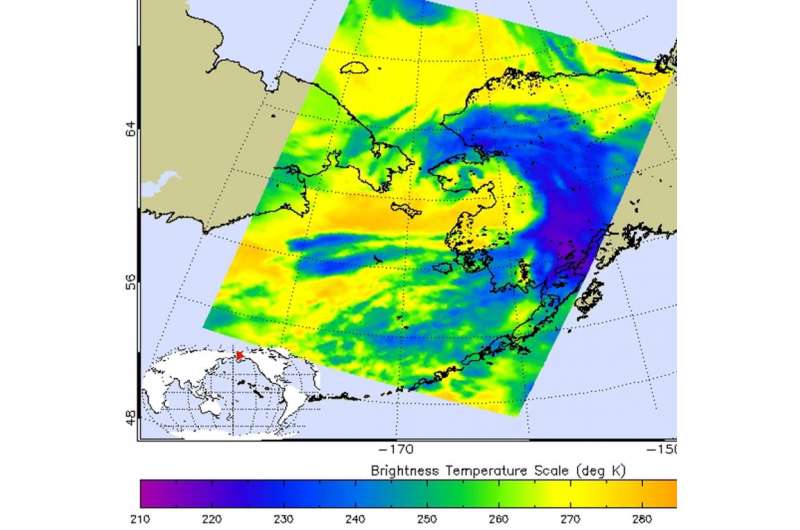NASA sees former Typhoon Atsani's remnants affecting Alaska

The remnants of former Typhoon Atsani were triggering watches and warnings for heavy rain and snow in portions of Alaska on August 26, 2015. Atsani's remnants resembles a frontal system in infrared imagery from NASA's Aqua satellite.
Infrared data, such as that gathered by the Atmospheric Infrared Sounder (AIRS) instrument that flies aboard NASA's Aqua satellite is used to determine cloud top temperatures. The colder the cloud tops, the higher they are in the atmosphere, and they are usually stronger. When Aqua passed over Alaska, the AIRS instrument gathered data on Atsani's remnant clouds. Cloud tops in the northern and eastern sides of the system were coldest near -63F/-53C, indicating strong storms with the potential for heavy rainfall. The infrared data was made into a false-colored image at NASA's Jet Propulsion Laboratory, Pasadena, California.
Fairbanks, located in the central part of the state has a wind advisory in effect from 6 pm this evening to 10 pm AKDT Thursday, August 27.
North of Fairbanks a winter storm watch is in effect as the precipitation is expected to fall in the form of snow. That watch covers areas above 2,000 feet in the Northeastern Brooks Range that includes Anaktuvuk Pass, Atigun Pass, Galbraith Lake, Sagwon and Franklin Bluffs. The Watch goes through Thursday evening, August 27 and calls for 3 to 6 inches of snow heaviest in Atigun Pass.
According to the National Weather Service office in Fairbanks, Alaska, between one and two inches of rain has fallen across much of the Northwest Brooks Range since Monday. The additional precipitation from Atsani's remnants triggered a flood advisory today, August 26, for the Northwestern Brooks Range until 2:30 a.m. local ADKT time, Thursday, August 27.
The National Weather Service (NWS) expects additional rainfall from one to two inches through Wednesday afternoon. The NWS noted that the heaviest rain will be on southwest facing slopes.
Provided by NASA's Goddard Space Flight Center




















